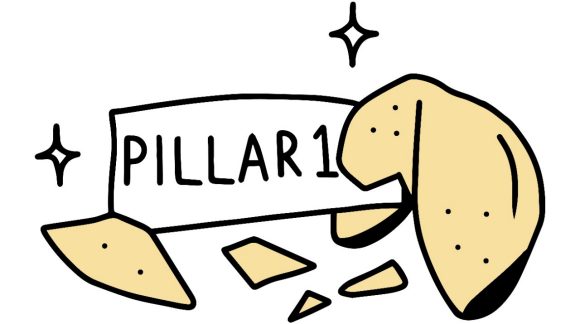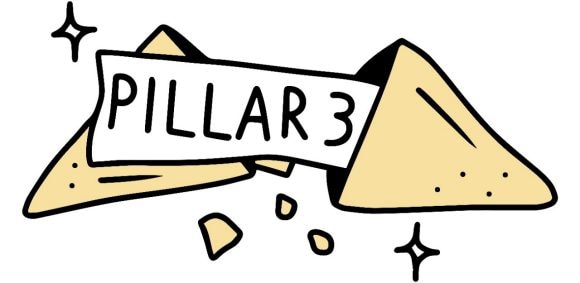The Swiss pension system is based on the 3-pillar principle
In this article we explain the three pillars in simple terms.

![]()
header.search.error
In this article we explain the three pillars in simple terms.

Pillar 1 comprises the AHV (old-age and survivors’ insurance) and the DI (disability insurance). It is mandatory for everyone employed in Switzerland and guarantees a basic minimum income in retirement.

Pillar 2 is the pension fund (mandatory). Employees aged 24 and over are required to pay into it. It is designed to enable them to maintain their standard of living in retirement.

Benefits from pillars 1 and 2 should be equivalent to 60 to 70 percent of your last salary.

Pillar 3 allows you to close any gap between the amounts you receive from the first two pillars and your expenses in retirement. Pillar 3 is voluntary. Given that you don’t know yet if you will have a gap (and if so, how large), it is a good idea to use pillar 3. You can pay in up to CHF 7,258 each year (as of 2025). One major benefit is that the amount you pay in can be deducted from your taxable income, meaning that you pay less in tax. The current official retirement age is 65 for men and 64 for women.
You can find detailed information on the three pillars below.

Pillar 1 is your state pension and guarantees a basic income in retirement
Pillar 1 is the old-age and survivors’ insurance (AHV). Everyone resident and employed in Switzerland pays into this from the age of 17. You begin paying in once you start working and from the age of 20 at the latest.
AHV contributions make up 8.7 percent of your gross salary and are deducted directly and paid in by your employer, with you and your employer each contributing half of the amount. You also pay an additional 1.9 percent for disability and income compensation (DI). These amounts are displayed on your monthly payslip. The total amount you pay into pillar 1 therefore depends on your salary. In other words, the amount you earn determines whether you pay less or more. This is because pillar 1 is based on a spirit of solidarity: people who earn more pay higher AHV contributions to support those who earn less.
In order to receive the maximum amount from pillar 1 later down the line, it is important there are no gaps in your AHV contributions. This isn’t an issue if you’ve always been employed. However, if you were to go abroad, for example, you would have to clarify in advance whether you still need to make contributions while you are away. It is important that you always pay in the minimum amount. If you go at least one year without making any AHV contributions, you should pay in the amount owed within five years in order to close the gap.
Pillar 2 is the occupational pension and allows you to maintain your standard of living in retirement
Pillar 2 is the pension fund. Along with pillar 1, the amounts paid out usually make up between 60 to 70 percent of your last salary, enabling you to enjoy the same standard of living after you retire. Every employee who earns over CHF 22,680 per year has a pension fund.
Everyone is required to pay in starting from 1 January after they turn 24. This is optional for self-employed individuals. If you change job, your entire pension fund savings must be transferred to your new employers’ pension fund. However, if you stop working, you must transfer the savings to a vested benefits account.
Unlike pillar 1, there are a few exceptions that allow funds to be drawn early from pillar 2, such as to finance a self-occupied residential property or if you become self-employed. If you would rather invest a little more into your pension fund, you can make additional voluntary contributions and thus increase your pension. This is particularly worthwhile if you are already a bit older and earn a relatively high salary.
Pillar 3 is the private pension and is designed to cover additional needs
Pillar 3 is voluntary and allows you to set aside a little extra money for your retirement. By paying into pillar 3 regularly, you can save more money than with a savings account thanks to higher interest rates. It also allows you to save on taxes, as the amounts you pay in can be deducted from your taxable income.
You can also invest your 3a savings in retirement investment funds and benefit from higher potential returns than with a savings account. A pillar 3a account not only allows you to increase your private retirement savings, but also to do something for society and the environment, thanks to sustainable UBS Vitainvest Investment Funds.
If you open a 3a account with a bank, you are free to decide if and how much you pay in each year – even paying in small amounts is a good way to start saving. However, if you open a 3a account with an insurance company, you’ll have to deposit a fixed amount each year and be less flexible. Nevertheless, if you have a pension fund, you may not pay in more than CHF 7,258 per year (as of 2025), regardless of what type of 3a account you have. Those without a pension fund may pay in up to 20 percent of their annual net income, up to a maximum of CHF 36,288 per year (as of 2025).
Funds in pillar 3 are blocked until five years before retirement, though as with pillar 2 there are some exceptions. You could withdraw the money, for example, to finance a self-occupied residential property, start your own business or move abroad.
A head start for your future
Start saving for retirement today: save on taxes, benefit in the long term and pay in whenever you want.